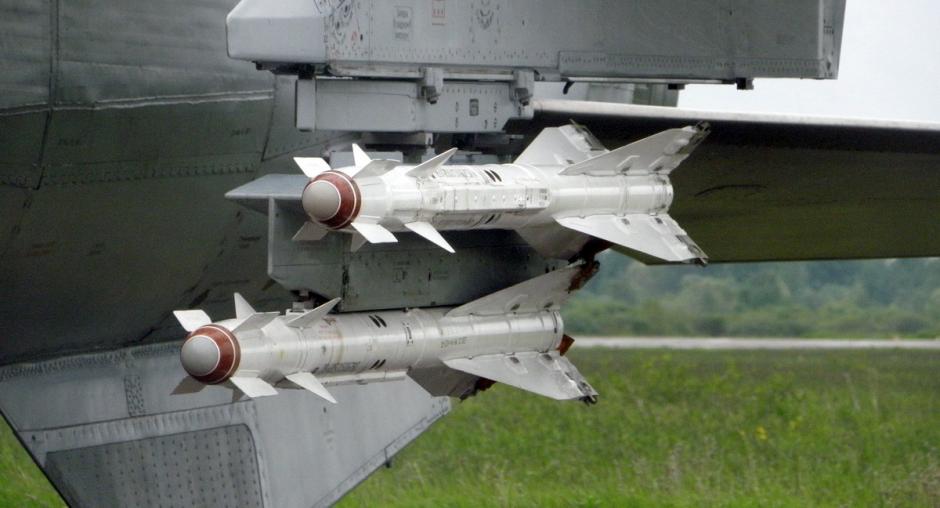A tale of 19 missiles
Nineteen R-60M air-to-air combat missiles belonging to the Republic of Moldova were destroyed in the Republic of Georgia on 12 July 2013.
They were dismantled and exploded at the open detonation range at Vaziani, 20 kilometres outside of Tbilisi. Their demolition marked the end of a long road.
The missiles were originally built by the Soviet Union for Soviet fighter aircraft around 1982. Missiles of this type were widely exported, and remain in service in the CIS and many other countries.
In the aftermath of the dissolution of the Soviet Union, they became the responsibility of the newly established Moldovan Armed Forces. They were sent for repair to Georgia in 1992.
These R60M missiles became a sword of Damocles hanging over the heads of the Moldovans. When you are status neutral, there are certain weapons you retain for self defence and that is only natural. But these were air-to-air missiles, and when, as is the case for Moldova, you do not have the air capability, you have no justification for retaining them.
Stephen Young
The 19 missiles ended up being stored at the Tbilaviamsheni aviation factory in Tbilisi. Twenty years passed. They were no longer needed by the Moldovan Armed Forces. Instead they had become not only dangerous to handle but also a political liability. By this time, Moldova was restructuring its armed forces. Having these weapons did not fit with its status as a neutral state, which it had assumed under the constitution of 1994.
“In fact, these R60M missiles became a sword of Damocles hanging over the heads of the Moldovans,” explains Stephen Young of the OSCE Mission to Moldova. “When you are status neutral, there are certain weapons you retain for self defence and that is only natural. But these were air-to-air missiles, and when, as is the case for Moldova, you do not have the air capability, you have no justification for retaining them.”
In 2007, the Moldovan government decided that the missiles should be destroyed. But before they could disappear, they risked becoming an object of international contention. How was their destruction to be undertaken and under whose supervision? They had been in storage for 15 years in another country – who was going to pay? That is where the OSCE entered the picture.
OSCE assistance
Moldova approached the OSCE to request assistance with destroying the missiles. At that time, the OSCE was conducting a demilitarization project in Georgia, in co-operation with the military-scientific agency Delta, which is affiliated with the Georgian Ministry of Defence and holds the exclusive rights to implementing weapons and ammunition disposal in the country.
The OSCE has been working with Georgia on demilitarization since 2003. One of the early projects involved building a demilitarization facility in Dedoplitskaro to dismantle munitions down to their component parts and smelt out the TNT to be used for purposes like mining and road construction.
The current collaboration went back to 2008, when the OSCE and Georgia signed a memorandum of understanding for a three-year project to destroy all Soviet ammunition left on the territory of Georgia after withdrawal of the Russian Forces. The war in August and the closure of the OSCE Mission interrupted that work, but on request of the Georgian Government it was resumed in 2010 by the OSCE Secretariat in co-operation with UNDP. It envisages disposing of 1,800 tonnes of various types of obsolete ammunition, stored in precarious conditions in the open air.
It took several years to convince all the Georgian authorities and industries concerned to include the destruction of the Moldovan missiles into this resumed demilitarization programme. Delta helped to untangle much of the bureaucratic red tape. And Georgian authorities were able to waive the storage charges as a contribution to the OSCE project. Now it just remained to be seen how the demolition itself could be funded.
Here again, it was the OSCE’s long experience in nurturing ties with participating States and donors that helped. The OSCE Mission to Moldova has been working with the Moldovan Ministry of Defense in a demilitarization programme of its own since 2007. Germany, one of the major donors, had funded disposal of other types of Moldovan missiles and now agreed to also fund the destruction of the 19 that remained in Georgia.
That is how they came to be destroyed, together with 1,289 Soviet cluster bombs left in Georgia after the dissolution of the Soviet Union. With their demolition, witnessed and recorded by the Moldovan Ministry of Defence and the OSCE Mission to Moldova, another part of the hazardous Cold War legacy came to an end. It would be going too far to say that the missiles had become harbingers of peace. But in the end, their story was one of international organizations, governments and donor countries working together to find solutions, for making the world a safer place.

